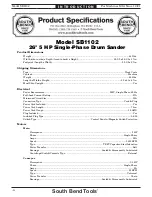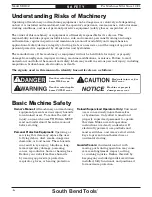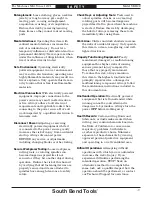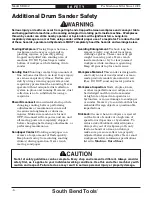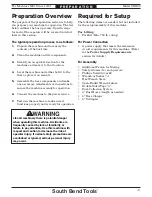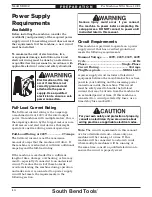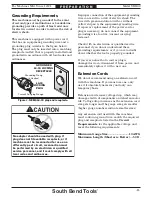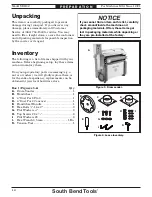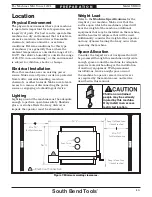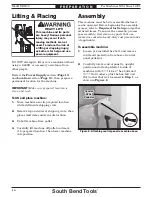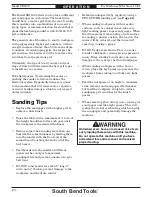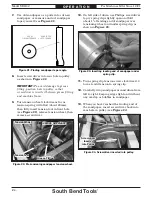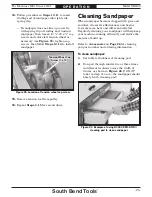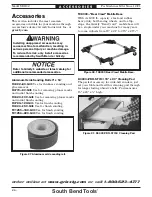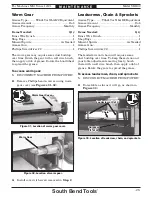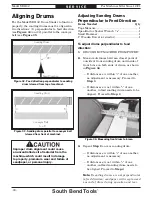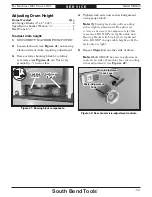
OPERATION
-18-
For Machines Mfd. Since 12/21
South Bend Tools
Model SB1102
O P E R A T I O N
Operation Overview
Loose hair, clothing, or
jewelry could get caught
in machinery and cause
serious personal injury.
Keep these items away
from moving parts at all
times to reduce this risk.
To reduce the risk of
serious injury when using
this machine, read and
understand this entire
manual before beginning
any operations.
The purpose of this overview is to provide
the novice machine operator with a basic
understanding of how the machine is used during
operation, so they can more easily understand
the controls discussed later in this manual.
Note:
Due to the generic nature of this overview,
it is not intended to be an instructional guide
for performing actual machine operations.
To learn more about specific operations and
machining techniques, seek training from people
experienced with this type of machine, and do
additional research outside of this manual by
reading "how-to" books, trade magazines, or
websites.
1.
Examines workpiece to verify it is suitable
for sanding and determines which sandpaper
grit size to use.
2.
Verifies workpiece has necessary outfeed
clearance and support. If workpiece is overly
long and difficult to handle, operator uses a
roller support stand or an assistant to assist
with feeding.
3.
Adjusts table height to approximate
workpiece thickness.
Note:
During initial pass with a new
workpiece, operator adjusts table height
as necessary so workpiece only makes light
contact with sanding drums and does not
overload sander.
4.
Puts on safety glasses, respirator, and any
other required protective equipment.
5.
Starts dust collection system and then drum
sander. Waits for sanding drums to reach
full speed and then sets conveyor speed for
the specific type and finish of workpiece.
6.
Feeds workpiece into sander by placing front
end on infeed side of conveyor table and
supporting back end until workpiece engages
with pressure rollers. Adjusts conveyor speed
as needed to maintain safe amperage level.
7.
Receives workpiece from outfeed side of
conveyor table.
8.
Raises height of conveyor table a small
amount (typically
1
⁄
4
rotation of handwheel),
then repeats the feeding process of workpiece
through sander.
9.
Changes sandpaper to a finer grit, as needed.
10.
Repeats Steps 6–9 as needed, turns sander
OFF, then disconnects it from power.
To reduce risk of eye injury
from flying chips or lung
damage from breathing dust,
always wear safety glasses
and a respirator when
operating this machine.
To complete a typical sanding operation, the
operator does the following:
Содержание SB1102
Страница 60: ...southbendtools com Printed In Taiwan JP21221...

